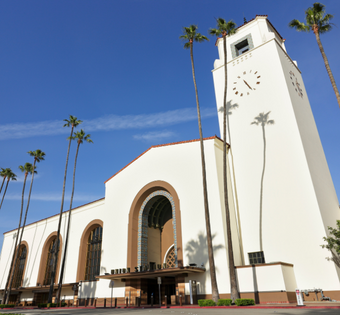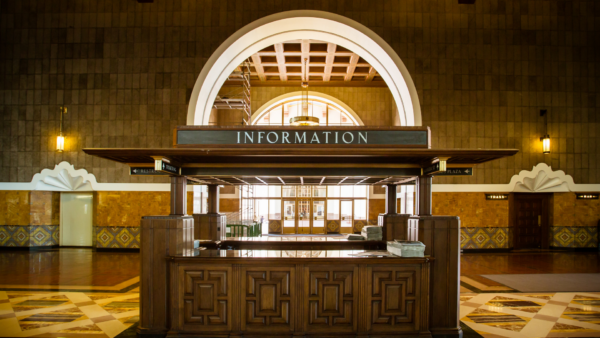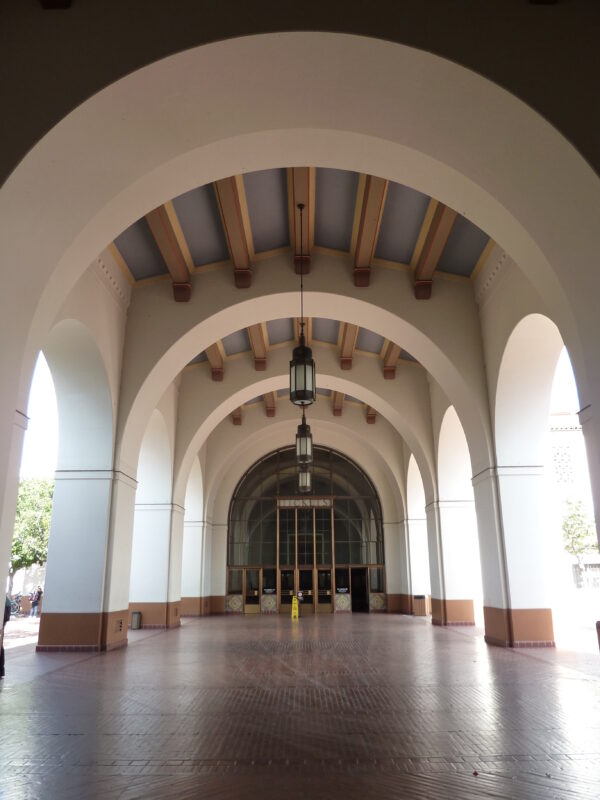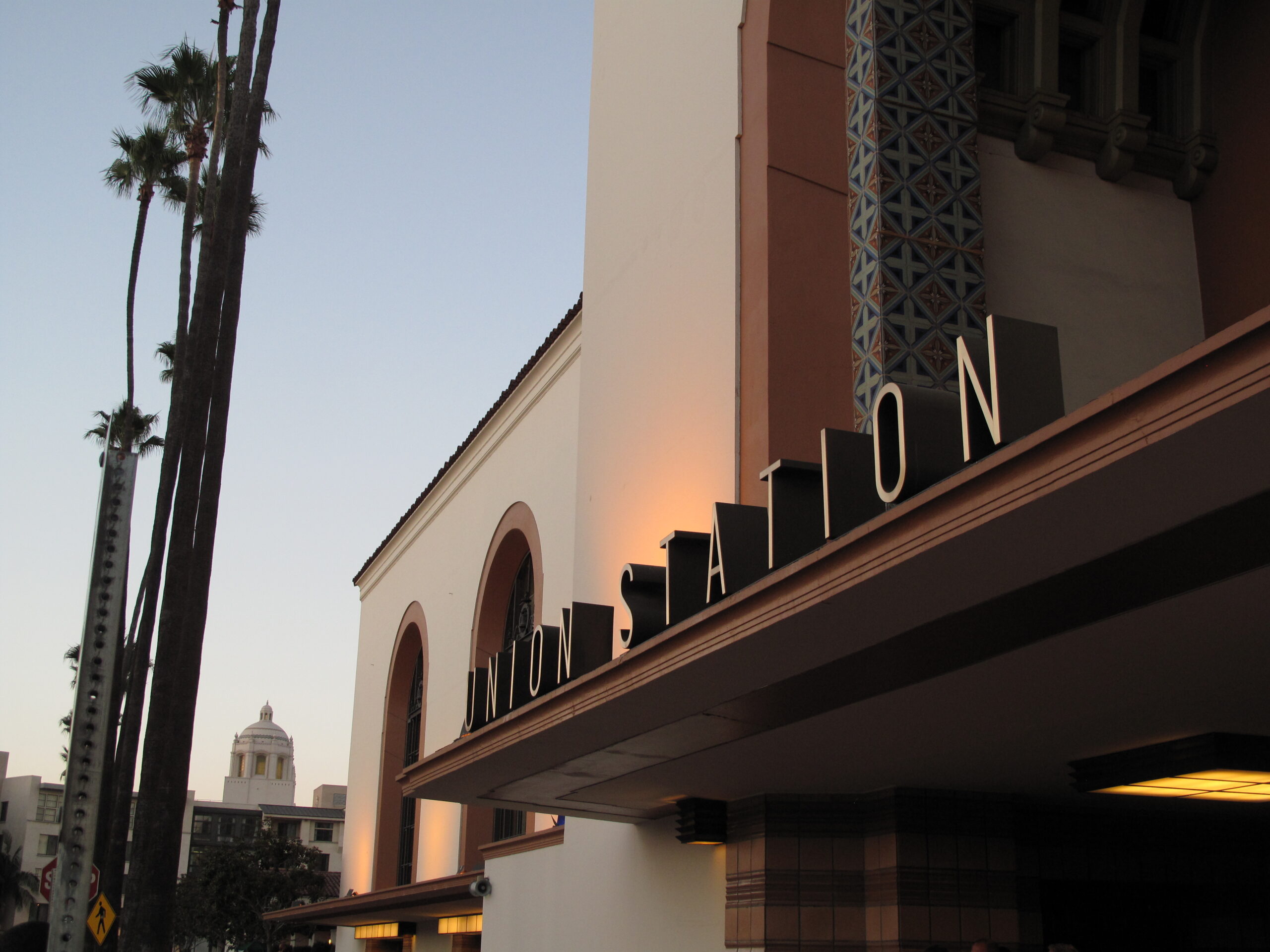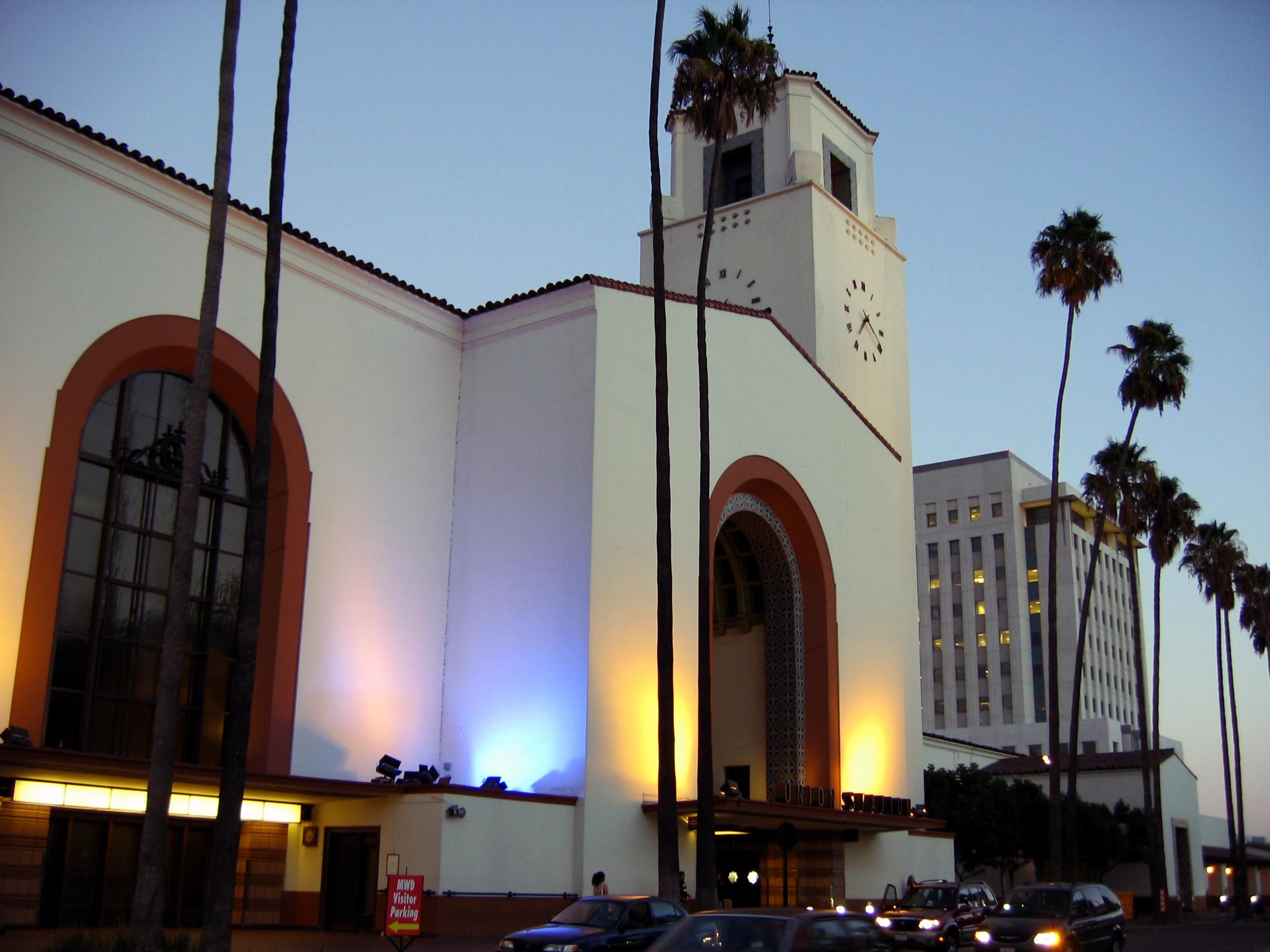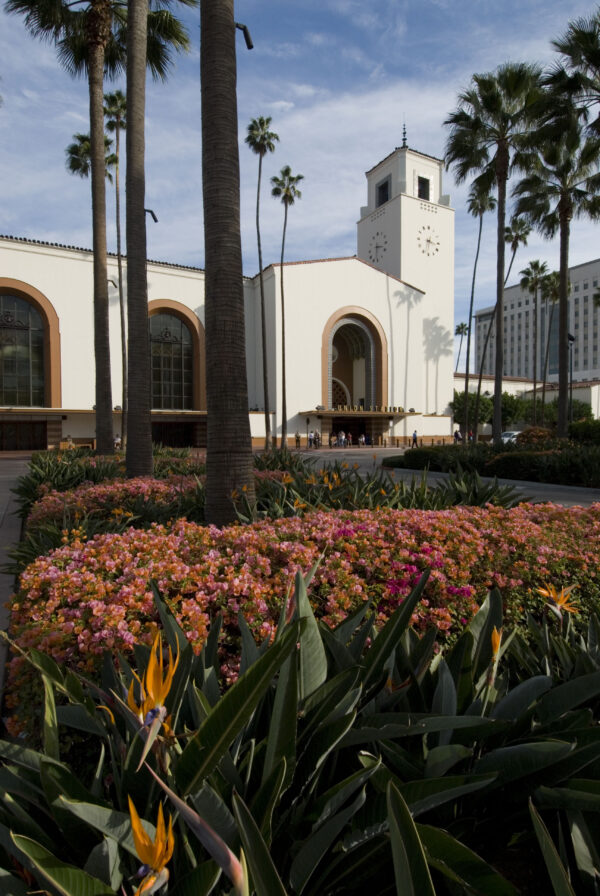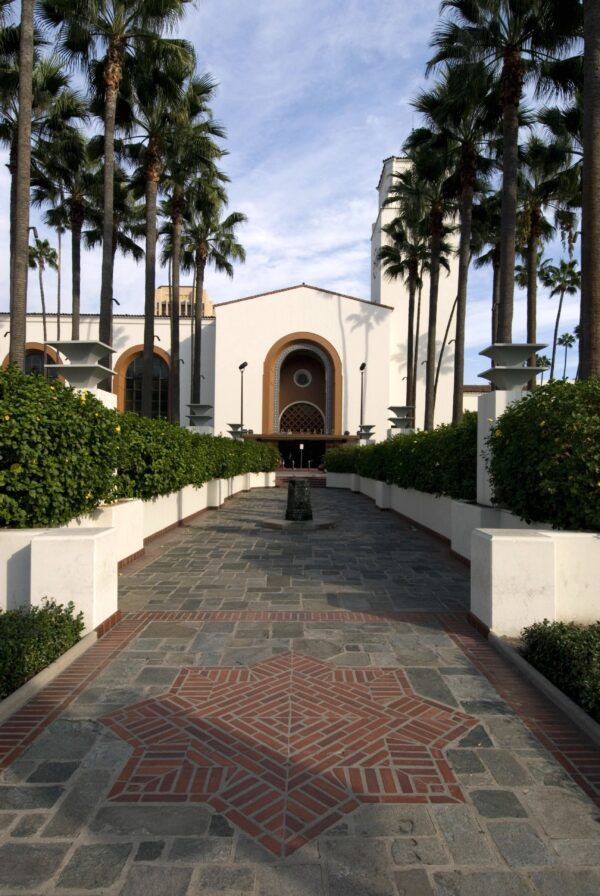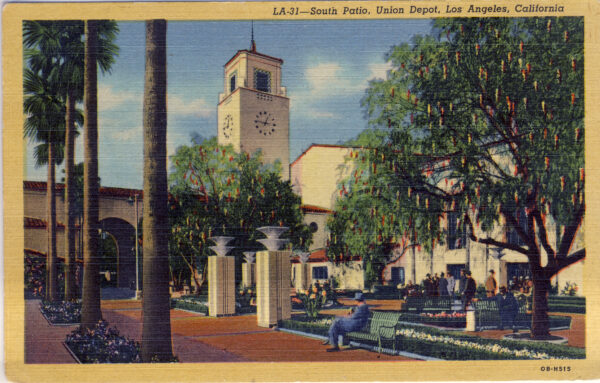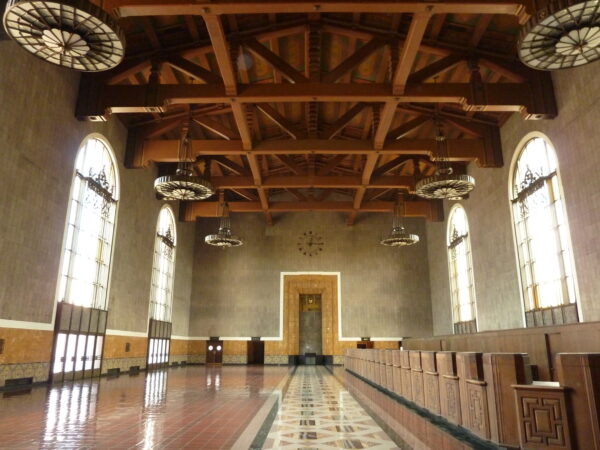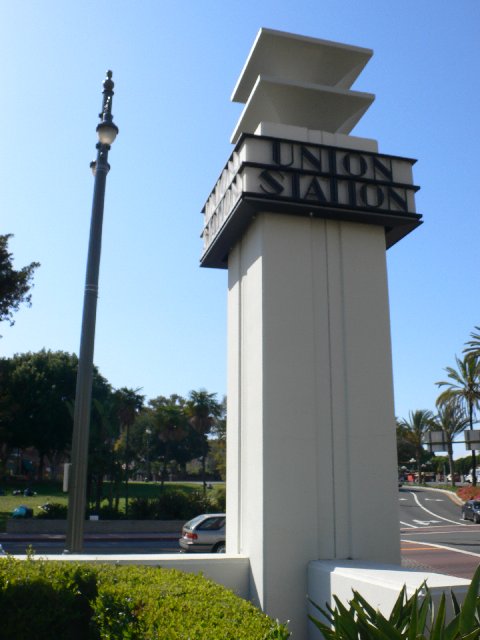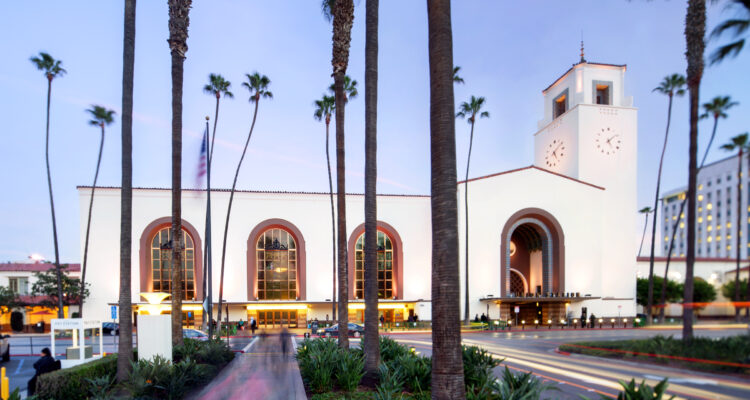
Place
L.A. Union Station
One of the most beloved train stations in the U.S. and built in 1939, Union Station's five-year rehabilitation project ensures that the crown jewel of L.A.’s transportation system will continue to serve generations of Angelenos.
Resolved
Place Details
Address
Get directions
Architects
Year
Decade
Property Type
Government Officials
Attributes
Community
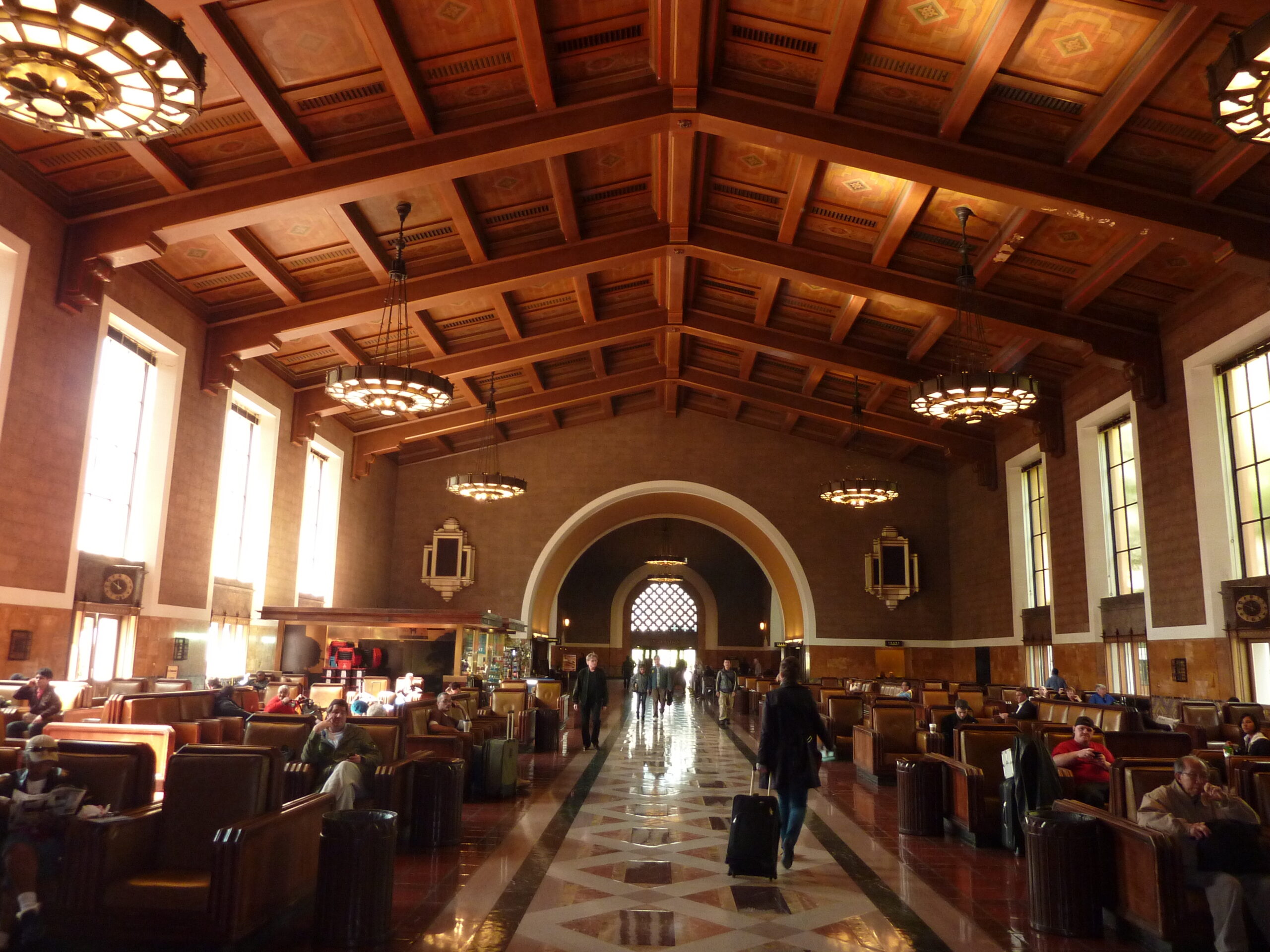
| Photo by Anthony Rubano
Overview
Union Station embodies the excitement, promise, and wide-open spaces of Southern California in the early and mid-twentieth century. Completed in 1939 as train travel began to be surpassed by other modes of transportation, Union Station was the last grand railroad station built in America.
In 2011, Metro purchased the landmark with the goal of accommodating current and future transit needs, such as high-speed rail and creating greater connectivity with surrounding neighborhoods while protecting and enhancing the historic Union Station.
The Conservancy has advocated for preserving Union Station’s integrity since 1995 and was involved with the Master Plan process.
About This Place
About This Place
Since 1939, Union Station’s gardens and patios welcomed travelers to the sunny and mild climate of Los Angeles. The station’s monumental architecture, a unique combination of Spanish Colonial Revival and Art Deco styles, reflected popular architectural design in Southern California and assured that it would be one of the most identifiable landmarks in the city. The grand opening of the John and Donald Parkinson-designed train station was celebrated with a three-day extravaganza attended by nearly half a million people.
The Union Station Master Plan encompasses approximately 38 acres, including the 161,000 square-foot terminal building, outdoor patios, and railroad tracks. Construction of the future high-speed rail concourse, planned to begin at the end of the decade, will occur at the rear of the property without significant adverse impacts to the historic train station.
By Metro’s ownership, time had taken a toll on L.A.’s beloved landmark. Dark residue from years of nicotine and environmental pollutants covered the interior walls and ceilings. Black patina concealed the station’s metal doors, windows, and bronze chandeliers.
The team cleaned the walls, ceiling, and metal finishes. They restored the wood of the waiting room chairs and the ticket booths in the ticket concourse. In accordance with the station’s historic color palette, the they repainted the building’s exterior.
The team reused original tiles to repair the roof, using replacements only when necessary.
Metro made a series of upgrades to bring the historic station into the 21st century. They installed a new HVAC system, bringing air conditioning to the station for the first time. To better serve an increasing number of bicyclists, the team added a newly-constructed Bike Hub behind the north breezeway of the station, providing bike storage, repair, and retail.
Additionally, Metro committed to bringing the long-empty former Harvey House restaurant back to life. Closed since 1967, Metro found a willing tenant in the new Imperial Western Beer Company. Before the new restaurant opened, Metro cleaned and repaired the incredible interior space designed by Mary Colter, and made numerous tenant improvements, including installing an elevator to the restaurant’s mezzanine area.
This thorough and thoughtful long-term project earned a 2019 Conservancy Preservation Award.
